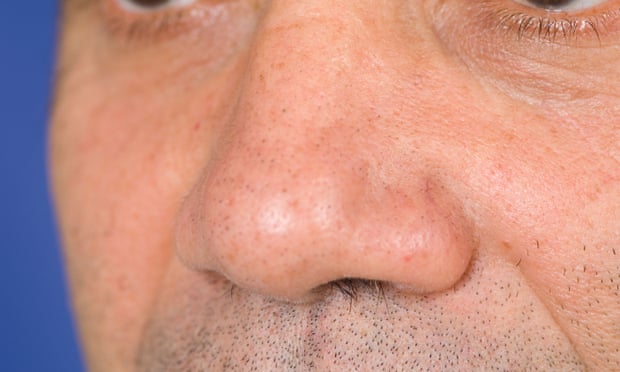Research may lead to simple tool to make prognoses for people with brain injuries
Wafting the scent of rotten fish or shampoo under the nose of a patient with severe brain injury could help doctors determine their level of consciousness – and their chances of long-term survival.
Scientists say patients are more likely to take a sniff of the odours if they are in a minimally conscious, rather than an unresponsive, state, but if the latter do respond to smell, it bodes well.
“If you approach people who are unconscious and you present them with an odour [and] they sniff it, they will resume consciousness at some stage and probably live for at least three years,” said Prof Noam Sobel, co-author of the research at the Weizmann Institute of Science in Israel.
The team says the upshot is a simple, cheap and potentially valuable tool that could aid diagnosis, management and prognosis of patients, noting misdiagnosis of the state of consciousness occurs in up to 40% of patients with brain injuries.
“There are other methods out there that are as powerful as this, however they are utterly complex,” said Sobel.
Writing in the journal Nature, Sobel and colleagues report how they held up either an empty jar or a jar containing the odour of shampoo or rotting fish to 43 patients with brain injuries and measured the volume of air they inhaled.
Over several weeks the team conducted 146 sessions, each consisting of multiple tests. After each session, the team used standard clinical measures to determine whether that patient was in an unresponsive or minimally conscious state: some patients switched between sessions.
The results reveal that, taken as a group, patients in a minimally conscious state during a session took an abrupt sniff when an odour was presented, with a far smaller effect seen for an empty jar.
By contrast, as a group, those deemed to be in an unresponsive state showed no such sniff responses.
Crucially, however, there was variation between individuals: 10 of 24 patients deemed to be in an unresponsive state during a session showed a clear sniff response.
“The striking outcome here is that all those patients who had a sniff response when they were vegetative, later transitioned to [a] minimally conscious [state],” said Sobel, with the team noting nine of the 10 patients were still alive an average of 3.5 years after injury.
Indeed, the team found patients who responded to the odours – whatever their state of consciousness at the time – had a better chance of survival.
Sobel said unlike other senses, the olfactory system has a direct link to the brain, potentially making the sense of smell a good indicator of the integrity of connections that are important for consciousness.
“It is not that we are claiming that olfaction per se is the seat of consciousness, but rather it is a very good indicator of consciousness,” he said.
The team is now developing an app based on the approach and carrying out further work to test the approach in an international collaboration.
Dr Damian Cruse, an expert in diagnosis of disorders of consciousness at the University of Birmingham, who was not involved in the study, said the research opened up a new way to access the minds of unresponsive patients.
“Each patient with a diagnosis of a disorder of consciousness will have a different pattern of brain injury, so it’s particularly important for appropriate clinical decisions that we have an array of assessments that maximise the chances for a patient to demonstrate some residual awareness,” he said.
While Cruse noted that other techniques such as brain imaging could detect whether patients could imagine movement or understand speech, the sniff response offered a different, passive test for consciousness and was both simple and cheap.
However, the study has limitations, including that it only involved a small group of patients. Cruse said only one clinical method was used to diagnose the level of consciousness in the patients.
“This could mean that the accuracy of the sniff method to predict recovery isn’t as high for patients outside of this study who are in a clinical system that provides access to multiple and thorough clinical assessments,” he said.
guardian.co.uk © Guardian News & Media Limited 2010
Published via the Guardian News Feed plugin for WordPress.
